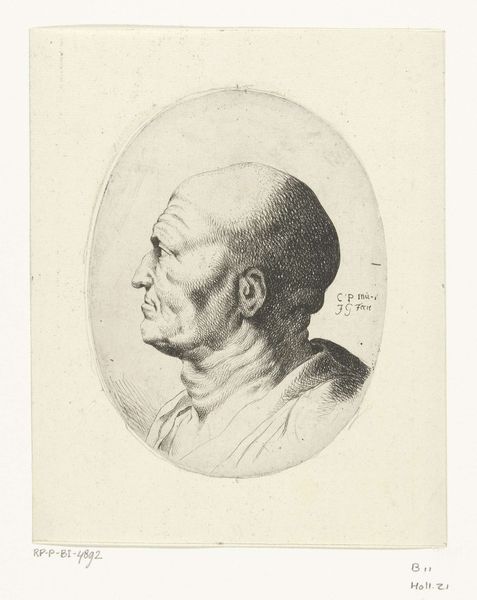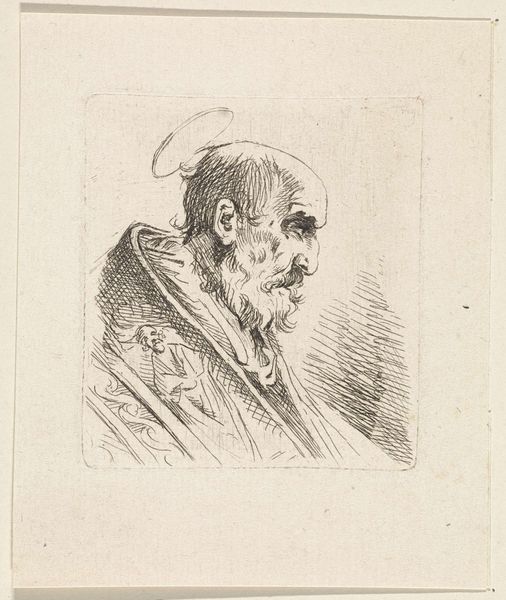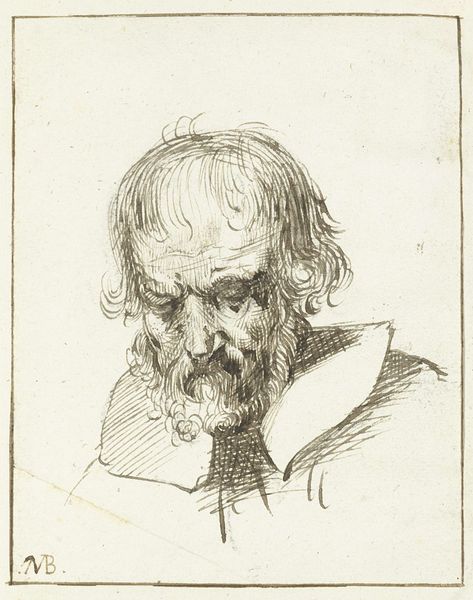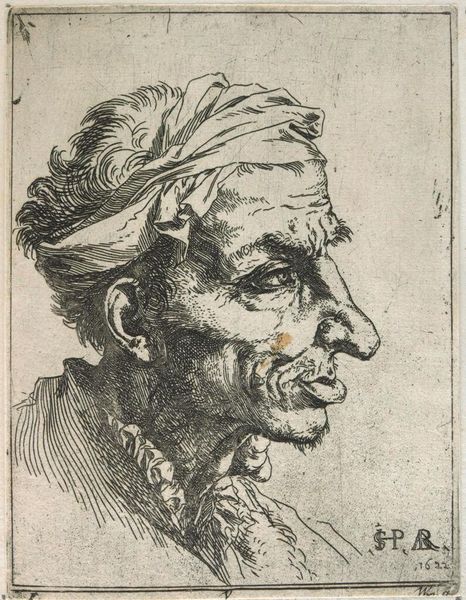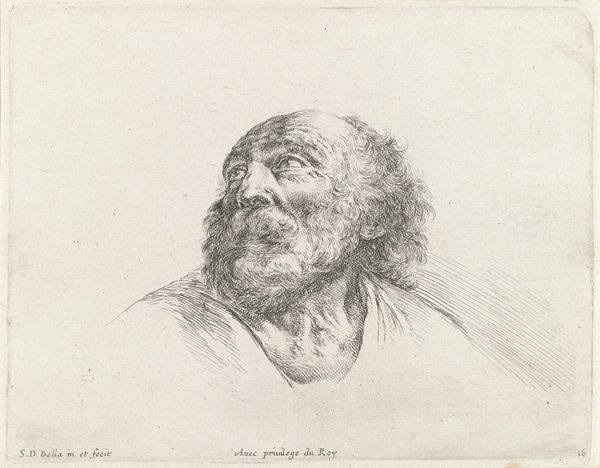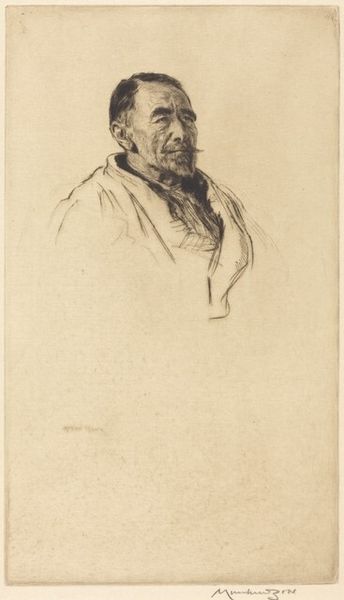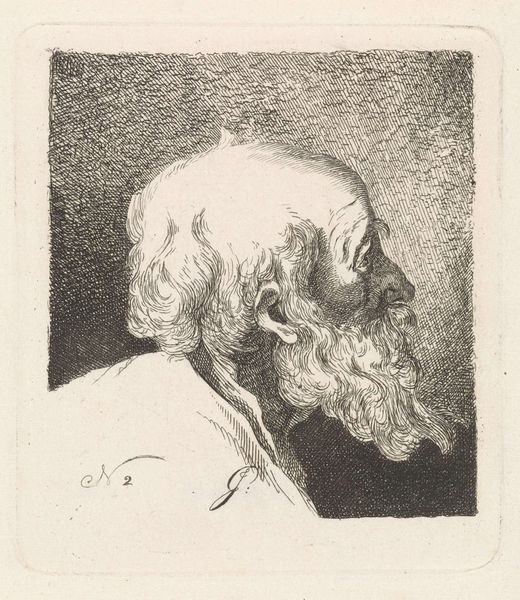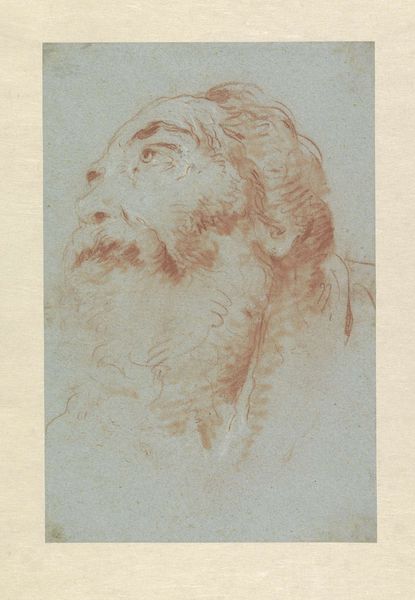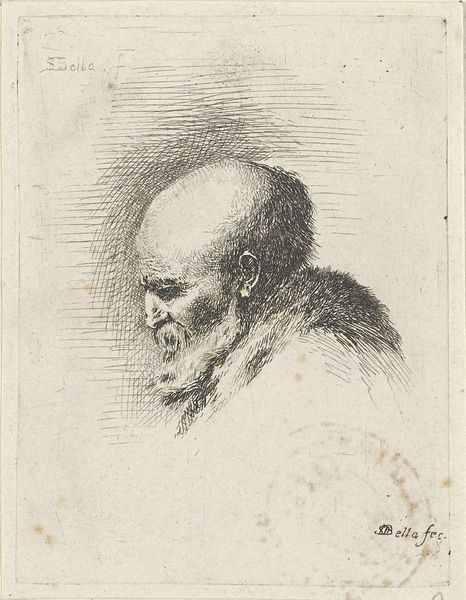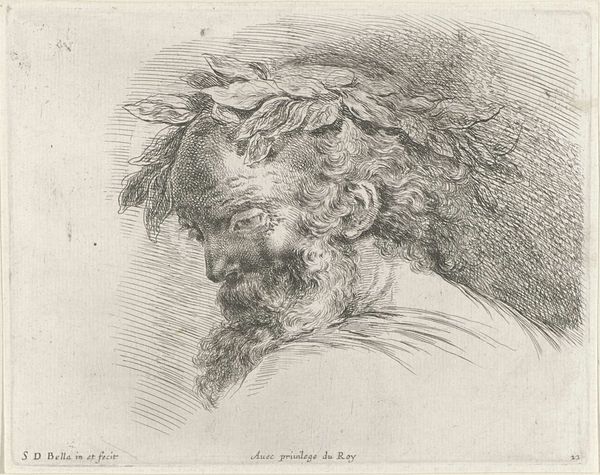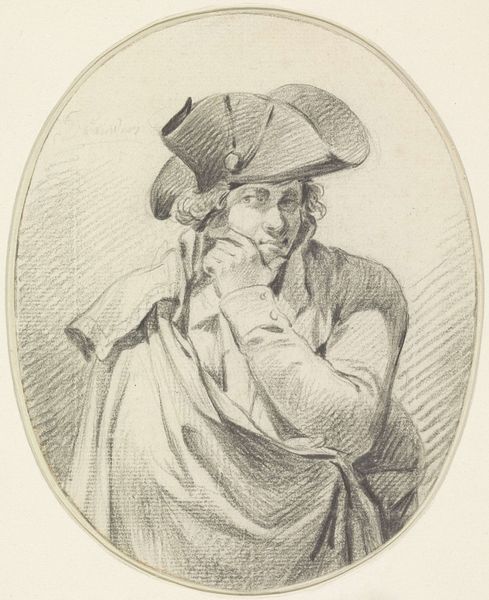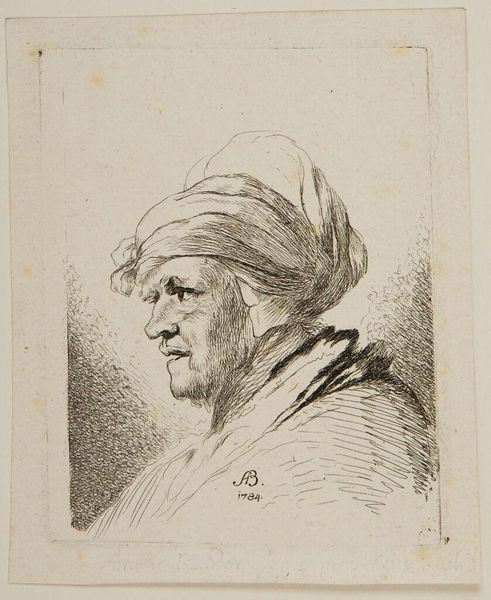
Silenus 1779
Copyright: CC0 1.0
Curator: Here we have Robert Blyth’s depiction of Silenus. Look closely at the engraving, it's quite striking. Editor: Indeed. I find it rather grotesque, almost comical in its ugliness. It challenges conventional beauty standards prevalent during its time. Curator: The work definitely plays with the grotesque, a common trope in depictions of Silenus. Think about the socio-political implications. Editor: Absolutely. Silenus, the companion of Dionysus, often appears as a symbol of revelry, drunkenness, and a departure from societal norms. This image captures that perfectly. Curator: And Blyth, active in the late 18th century, situates himself within a longer tradition of representing classical figures. It served specific social functions. Editor: But it also invites us to question the values of his society – what is deemed acceptable, what is considered monstrous? A lasting and provocative reflection, really. Curator: A worthy point. It certainly gives us much to consider regarding the role of imagery in shaping perceptions.
Comments
No comments
Be the first to comment and join the conversation on the ultimate creative platform.
